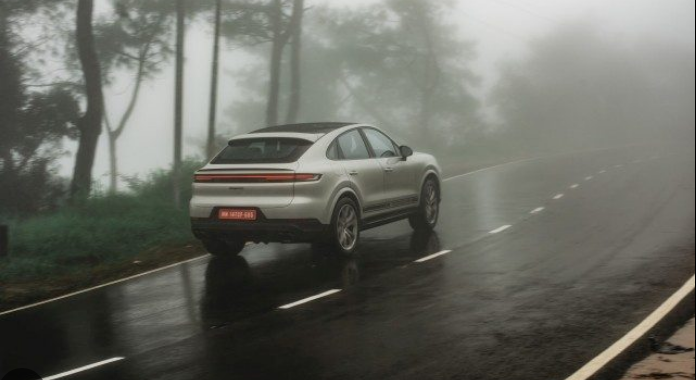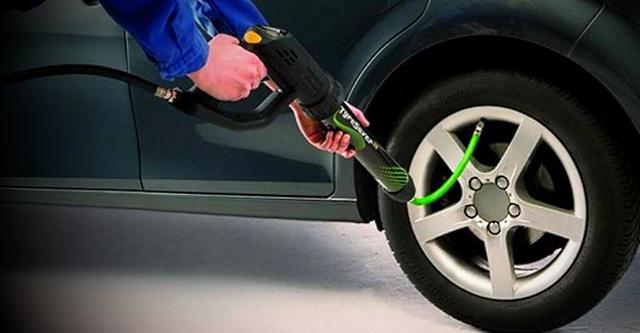How to Prepare Your Car for the Monsoon: As the monsoon clouds gather and the first drops of rain begin to fall, Indian roads transform into slippery, unpredictable landscapes.
While the rains offer much-needed respite from the sweltering heat, they also present a unique set of challenges for drivers and their vehicles.
From water-logged streets to decreased visibility and brake inefficiency, the monsoon demands a comprehensive approach to car care.
Here is your 1000-word guide on how to prepare your car for the rainy season, ensuring safety, performance, and peace of mind.

1. How to Prepare Your Car for the Monsoon: Tyre Check
Tyres are your first line of defense against wet roads. Worn-out tyres lose grip on slippery surfaces, leading to hydroplaning. Ensure your tyres have at least 2.5mm of tread depth. If they are close to the wear indicators, it’s time to replace them. Also, check for any visible damage like cuts, cracks, or bulges.
Proper tyre pressure is crucial. Under-inflated tyres increase rolling resistance, reducing fuel efficiency, while over-inflated tyres compromise grip. Refer to your car’s manual for the recommended pressure and check it regularly.
2. How to Prepare Your Car for the Monsoon: Wipers and Washer System
Wiper blades tend to wear out quickly, especially under harsh sunlight. If your wipers leave streaks or make screeching sounds, replace them immediately. Clean the windshield and wiper blades frequently to remove grime and residue.
Ensure your windshield washer reservoir is filled with a mix of water and a mild detergent or windshield-cleaning solution. This helps maintain clear visibility by easily removing mud splashes and oily residues.
3. How to Prepare Your Car for the Monsoon: Brakes
Wet conditions increase braking distance, making efficient brakes a must. Get your brake pads and discs inspected by a professional. Listen for any squealing or grinding sounds while braking. These could indicate worn-out pads or issues with the braking system.
If your car has ABS (Anti-lock Braking System), ensure it’s functioning correctly. In emergencies, ABS prevents wheels from locking up, maintaining steering control.

4. How to Prepare Your Car for the Monsoon: Battery Health
Excess moisture can affect battery terminals and connections. Clean the battery terminals and apply petroleum jelly to prevent corrosion. Ensure the battery is securely mounted and the clamps are tight.
If your battery is more than three years old or shows signs of weakening (slow cranking, dim lights), consider getting it tested or replaced. Monsoon isn’t forgiving to weak batteries.
5. Lights and Electricals
Visibility is significantly reduced during heavy rains and fog. Check all lights—headlights, tail lamps, brake lights, indicators, and fog lamps. Replace any fused bulbs.
Ensure that your electrical system, especially the fuse box and wiring, is properly insulated and free of moisture. Modern cars have complex electronics, and water ingress can lead to expensive repairs.
6. Underbody Protection
Water, mud, and road salt can corrode your car’s underbody. Opt for an underbody anti-rust coating from a trusted service center. This coating acts as a barrier against moisture and extends the lifespan of your car’s chassis and suspension components.
7. Check the AC and Defogger
During monsoons, windows fog up due to humidity. Ensure your air conditioning system and rear defogger are working efficiently. A functional AC system helps dehumidify the cabin and improves visibility.
Replace the cabin air filter if needed. A clogged filter not only reduces cooling efficiency but also leads to a musty odor inside the car.
8. How to Prepare Your Car for the Monsoon: Fluid Levels and Leak Inspection
Top up all essential fluids—engine oil, brake fluid, coolant, windshield washer fluid, and transmission oil. Ensure there are no visible leaks. A leaking fluid could spell disaster on wet roads where repair assistance is harder to come by.
Pay special attention to the brake fluid reservoir. Any drop in level could indicate a leak in the brake line, which is extremely dangerous in monsoon driving conditions.
9. How to Prepare Your Car for the Monsoon: Emergency Kit
Equip your car with an emergency kit tailored for the monsoon. Include:
- A flashlight with extra batteries
- First-aid kit
- Tow rope
- Umbrella or raincoat
- Power bank and phone charger
- Reflective warning triangles
- Basic tool kit
- A small fire extinguisher
- A pair of waterproof gloves
- Car documents in a waterproof pouch
Also, carry a portable tyre inflator and jumper cables—lifesavers in case you’re stuck in a waterlogged area.
Also Read: MINI India Launches Price Protection Programme for 3-Door Cooper S Amid Anticipated Duty Cuts
10. Maintain Exterior Hygiene: More Than Just Looks
Clean your car regularly to remove mud, tree sap, and contaminants. Waxing your car before the monsoon adds a layer of protection and helps rainwater bead off easily.
Pay attention to the rubber beading around windows and doors. Damaged beading can allow water to seep in, causing electrical issues and a foul smell.

11. Drive Smart, Drive Safe
Even after all precautions, the key to monsoon driving lies in how you handle your vehicle. Avoid sudden braking, sharp turns, and speeding through puddles. Maintain a safe distance from the vehicle ahead.
Always assume that puddles could be deeper than they appear. If possible, avoid driving through waterlogged areas. Water can damage the engine, especially if it enters the air intake.
Use low-beam headlights during heavy rain. High beams can reflect off the water droplets, further reducing visibility.
Monsoons in India are both beautiful and brutal. While we enjoy the rains, it’s crucial to adapt our driving habits and maintain our cars to handle the seasonal shift. A little preparation goes a long way in ensuring safety, performance, and comfort during the rains. Follow this guide to monsoon-proof your car, and you’ll be ready to take on whatever the clouds bring your way.
Also Read: Xiaomi YU7 Electric SUV Set to Debut in India This July, What are its New Features?



